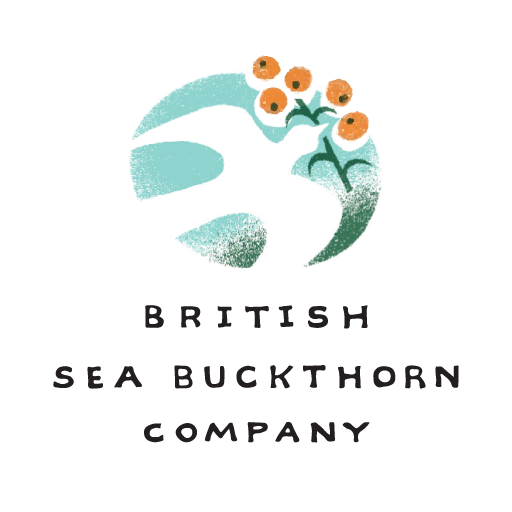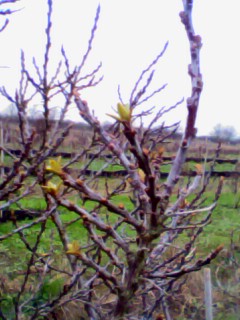This last weekend was our first sea buckthorn event. What we have been trying to do at Devereux farm is create a business based on the plant sea buckthorn. Why sea buckthorn? Sea buckthorn because it has so many qualities that are unique to itself. How many nutrients it has I am not certain. It may be 190, as quoted by so many, but it may be more. The benefits that these provide are diverse. I believe this because I have read some of the research work that suggests links with varied health benefit, but more importantly for me I have been taking sea buckthorn capsules since 2009 and believe that they have provided me with a higher standard of health resilience. You might say – give me the proof, and that is the issue about a natural product. It is difficult to find the proof. the proof comes from commitment, practical trial and consideration of the results.
I mention the word natural because it was questioned on Saturday as to whether one could define it. It is a term that we use when describing a product to help a consumer feel that they can understand more about its background. Natural for me comes from my background. I am a farmer, a grower of product that comes from the soil. A grower of product that relies on the environment to give it sustenance. It would not develop and mature if it were not for what it derives from the soil it grows in; the sun that provides its energy; the rain that provides essential water. There are levels of management that I provide, but these are there to provide protection from pests and disease. The development of product is largely down to what the plant can pull from the immediate area around it and create the leaves and berries that I want.
These are natural things. The process is a chemical one. A process of natural chemistry that is highly complex and varied. The demands of the growing cell are well known. The way that plants develop is understood. the complexity of the soil is understood, but if the soil that the plant grows in is healthy it involves a myriad of organisms that creates another world of complexity. Complexity of biological and chemical pathways that deliver essential components to the plant, often in return for benefits that the plant provides in return. These are the issues that I could associate with the term, natural.
I suppose it also comes with a level of acceptance that the process is not one in which I am in total control. Product creation that is as a result of a designed manufacturing process allows one to intervene at any stage and influence the process.
A natural production process may allow for some understanding of the process, but it is not designed by human hand. One’s understanding might allow for intervention to some degree but on the whole allowing a natural process to evolve, creates the production environment which allows reliance upon the processes of the soil and the air to create the product. It allows for complex chemical synergies within these environments to provide the mechanism to deliver the product.
Intervention to improve the production process is determined upon the level of knowledge that allows the right form of intervention to override what would normally proceed within the constraints of the growing environment. The environment is not always perfect. Weather patterns, pollution, chemical intervention and the health of the soil may all result in an end product of variable quality and even production failure.
Hedgerows are not always full of abundant fruit. It varies from year to year as conditions allow. Alternatively we farm and grow plants with a level of management to adjust the variations that the seasons and the years provide.
Thinking about the term natural brings me to the term – organic. What does it mean? What it means to me may be one thing. To the consumer another, and maybe to the organic accreditation bodies another altogether.
I see it as allowing the natural processes to develop my crop through natural chemistry, with a level of intervention which does not disrupt natural chemistry in the plant or soil. I know I have to intervene, because the natural environment is not always good enough to provide a consistent crop. But I have choices as to how I look to improve those growing conditions. Those choices could be to use a chemical that I am told will guarantee to protect a crop or improve immediate fertiliser availability so that the plant can operate independently of the soil. But how will the use of those chemical interventions impact on the holistic health of the soil and its ability to provide my plant in good times with the best growing environment? Will short term gain remove the abilities of the soil to deliver nutrients, micro-nutrients and control over pathogenic fungi and bacteria that might attack the plants in the future?
Chemical intervention may reduce the risk of a poor crop, it may also reduce the risk of reduced quality in the crop. Quality is what everyone looks for, so surely it might be better to use the modern interventions that science provides.
Quality assurance; lower risk of failure; improved production because of less disease all these are attractive. But can a healthy soil deliver the same, or similar results without the precise management inventions offered by chemical treatments.
The answer I would suggest is yes, but with increased risk to crop quality and yield. It requires as greater knowledge as the chemical route, with the acceptance that one is more at the mercy of the weather. A chemical route reduces stress in the plant helping it to cope with stressful times.
But all this presupposes that the end product quality it what you expect.
Quality is driven by agenda. It is driven by the need to produce reliable and consistent benefits that are designed by a producer for their market. It can be very specific. With product development comes viability and profitability. The latter demands that unnecessary cost undermines good returns. Quality that is created specifically in a targeted way is not wasteful as it has specific aims to channel dedicated resources into known output. Nature does not work that way. The resources dedicated are complex. That does not mean any less specific, but there is a set process involved within the soil that is channelled to create the processes that allow plants and crops to draw on its resources. The end result is not a process that has been designed for today’s markets, it is a process that has been evolving over millennia.
So what I draw from all this. Why is it important to me?
The attraction that I see in sea buckthorn is in its ability to harness a mass of bio-compounds that if consumed have the potential to deliver nutrients in a concentration that helps to improve health resilience. I am of the mind that the power of this is generated in the synergy of all the bio-compounds and the chemical relationship they have one with each other.
Intervene in this synergy and you reduce the ability of the whole to deliver the benefits that might be available. It is a natural construction, formed from a natural environment.
Hence when I view quality within the concept of sea buckthorn, I view it within the context of that whole bio-compound soup. A profile of natural chemistry that has a concentration that will be influenced by the environment in which it has been created. Do we really understand how that natural chemistry works? Do we understand how the human body assimilates all those nutrients within the context of their reactions together and their reactions within the human body’s functions.
So if it is difficult to define the precise relationship between the presence of a nutrient/micro nutrient and the ultimate benefits it can bring to health then intervening within the process of its production needs to be benign in order to best guarantee that any benefits that you look for are not lost.
I believe therefore that my way forward for growing sea buckthorn is to grow it as sympathetically as possible and look to harness the environment to grow the plant and not provide any measure that might change the biochemical profile within the plant. I need to ensure that it has sufficient water and food to develop and for the soil to be healthy. The end result I look for is a product of natural design not of mine.
This will lead me onto my next blog, which is what I have learnt from talking to Kirsten Jensen as a sea buckthorn agronomist who came to our event from Sweden this weekend. IT follows the concept above, but actually demands that I understand what sea buckthorn is first, rather than what I think it is.

